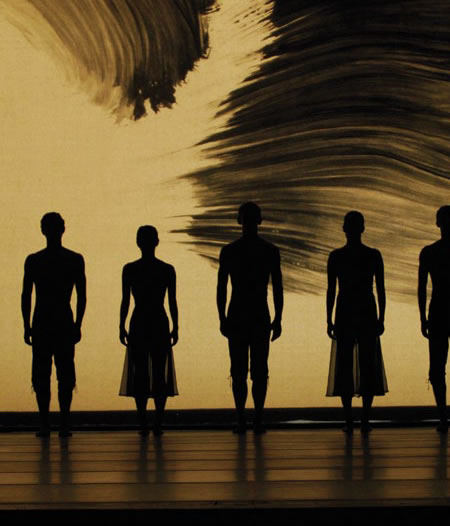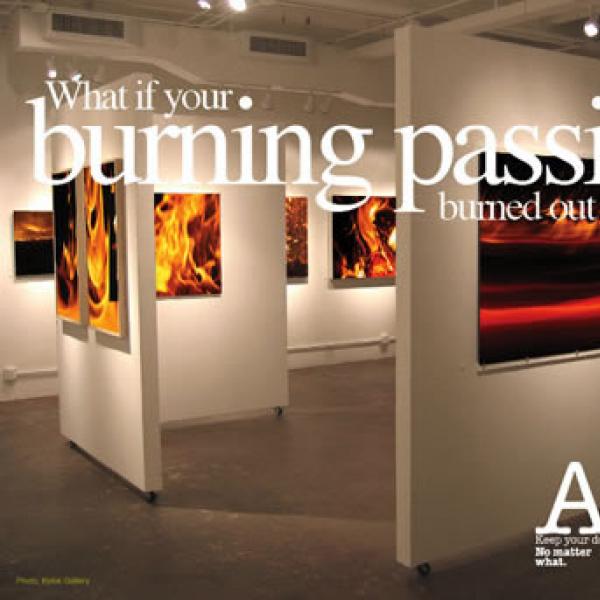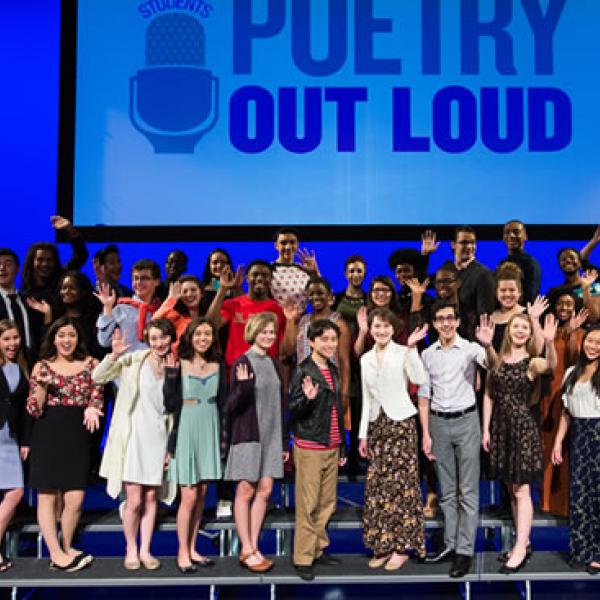Hearing a Different Drummer

Mark Morris. Photo by Amber Star Merkens
When the Arts Endowment first gave Mark Morris a choreography fellowship in 1983, he was still something of a rookie. His three-year-old company, the Mark Morris Dance Group (MMDG), was operating on a shoestring budget, with dancers receiving little if any compensation. The group performed just a handful of shows a year, and the closest thing they had to a headquarters was Morris' apartment. Twenty-nine years and a stockpile of NEA grants later, Morris has become one of the most respected, accomplished forces in modern dance.
His work has been described as "genius," "irreverent," "charming," and "inventive." He is known for subverting gender roles—women lifting men, dancers decked in drag—and his dancers' physiques defy the spare silhouettes so commonly found on stage. Deck of Cards (1983) featured a solo by a remote-controlled car and Hard Nut (1991) brilliantly reinvents The Nutcracker with vivacious 1970s panache while keeping Tchaikovsky's original score intact. In other words, Morris' pieces might break or make the rules, but it's rare, if ever, that they follow them.
Although this once marked Morris as the "bad boy" of dance, the choreographer has long since proven that his pioneering style cannot be pigeonholed. A music aficionado, Morris has choreographed works to Handel, Stravinsky, and Mozart, and collaborated with cellist Yo-Yo Ma and jazz pianist Ethan Iverson. He has moved freely between modern dance, ballet, and opera, choreographing for companies such as the Paris Opera Ballet and the Metropolitan Opera. His latest project for the San Francisco Ballet, Beaux, opened on Valentine's Day.

The Mark Morris Dance Group in Dido and Aeneas. Photo courtesy of MMDG/Costas |
This range is part of what has kept Morris so fresh through the years. There is always a new story to tell and new movement to explore. His scope also extends to the emotional realm, which has helped make him appealing to even casual spectators of dance. "[My work] shows a full range of emotional activity. It's real tragedy and real comedy," he said, two topics which anyone with a beating heart can relate to. "I'm not telling [audiences] that it's esoteric and they won't understand."
|
The Art of Mark Morris: a discussion of his work L’Allegro, il Penseroso ed il Moderato |
Morris was born in 1956 in Seattle, Washington, where he began dancing at an early age with local dance teacher Verla Flowers. He was originally taken with flamenco, but later turned his attention to Balkan folk dancing and joined the Koleda Folk Ensemble. He began choreographing while still a teenager, and premiered his first work, Barstow, when he was just 16. Later, he traveled through Macedonia, Greece, and Spain to pursue both flamenco and traditional Balkan dance, but ended up moving to New York in 1976 where he began to make his reputation in modern dance.
Since then, Morris' professional life has been marked by one triumph after another. He founded his own dance group in 1980, which he continues to head with the same energy and incredible prolificacy that he displayed in his youth. From 1988 to 1991, MMDG served as the resident dance company of the Théâtre Royal de la Monnaie, the national opera house of Belgium. The experience gave the choreographer access to his own space and a much higher budget than he had enjoyed at home, allowing him to create "large pieces that I could never have made in the United States," he said. Morris produced some of his most famous works during MMDG's three years overseas, includingL'Allegro, il Penseroso ed il Moderato (1988) and Dido and Aeneas (1989).

Mark Morris Dance Group's performance of the choreographer's Mozart Dances. Photo by Stephanie Berger |
Next came the White Oak Project, which Morris founded with Mikhail Baryshnikov in 1990 as the touring arm of the Baryshnikov Dance Foundation. In 1991, Morris was awarded a MacArthur Fellowship, and in 2001, the Mark Morris Dance Center opened in Fort Greene, Brooklyn, fulfilling a longtime goal of Morris' to provide his dancers with a permanent space.
Throughout the years, the common backbone through all of his work has been music. He insists on live music at all of his performances; even his rehearsals are accompanied by a pianist. When explaining why he refuses to succumb to recorded music, as many choreographers and companies have, Morris asks, "Why not then have a video of dancers, or why not just stay home and watch it on TV? I want an audience that's live and a performance that's live. Of course it's more expensive, and time-consuming, and a pain," he acknowledged. "But it's also better. I insist that everybody be conscious in the room and that's what makes my work so good."
His passion for and expertise in music have even given him the chance to work as a guest conductor, which he described as "scary." "You have to think slightly ahead of what's happening instead of while it's happening, which is what you do as a dancer," he said.
The extraordinary trajectory of Morris' career has been, by all accounts, quite a ride, which Morris acknowledges with gratitude. "I have a great job. I'm good at it. I'm fortunate," he said. "My dancers receive health insurance, and have a warm, decent, clean building. I'm in demand as a choreographer. I'm doing exactly what I want."
He also realizes how rare that is. "It's a nightmare to me that the arts aren't more prominent," he said, both in terms of funding and arts education. Even at his level—the height of his field—he sees the holes created by the art world's financial underbelly. "The weirdness of demand and reward is so bizarre," he said. "I want to be able to pay my dancers more. I want to have an orchestra of my own. I want to continue to do exactly what I'm doing and not have to hustle for anything."
But it's not artists' livelihoods that he is most concerned about; it's society in general. "When I was a kid, we went on field trips to the opera, to the symphony, to the international part of town," Morris said. "And that was public school. It was extremely important to everybody, whether you became a professional artist or not. [Art] is civilizing. It produces kinder, more intelligent people."
To that end, MMDG offers in-school residencies to Brooklyn schools, usingL'Allegro, il Penseroso ed il Moderato as a tool for teaching children about dance, music, and poetry. The company has also teamed up with the Brooklyn Parkinson Group to create the Dance for PD® program, which offers dance classes to Parkinson's Disease patients at the Mark Morris Dance Center. And a partnership with the New York City Housing Authority has led to free weekly dance classes for children, teens, and senior citizens living in public housing in Brooklyn. "Some people have more difficult lives than others," Morris said. "They can't be made worse by an injection of an artistic kindness."
It's a point that's hard to argue. This kindness, he hopes, will begin to reinvigorate a culture that he fears is beginning to flatline. It is too easy to get by on mediocrity, he thinks, and treating art as a luxury rather than a necessity will only serve to truncate horizons and derail any progress toward a "compassionate culture."
"Imagination, risk, daring, personality, participation, inquisitiveness, rigor," he listed, naming words that could all be applied to his own work and vision. "Those are the things I say need to be more respected."










